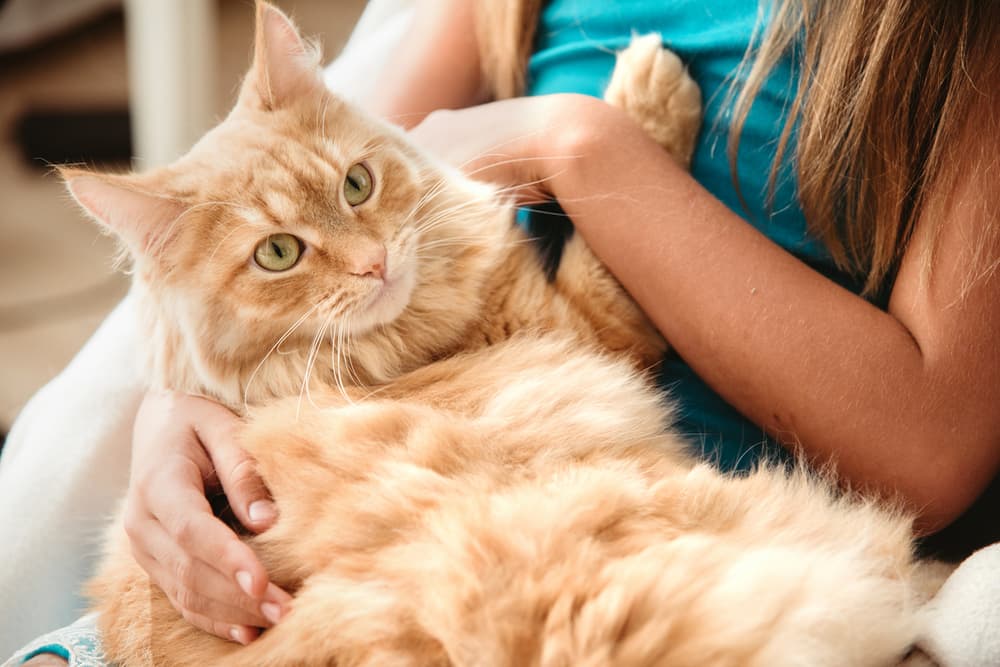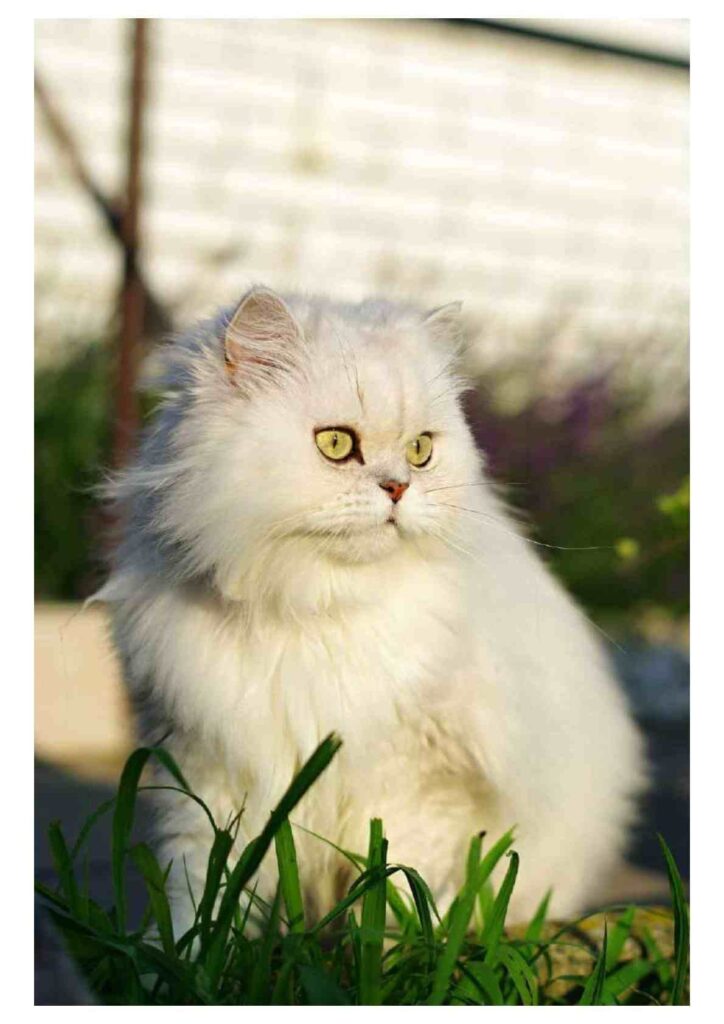Persian Cats and Children: Tips for a Harmonious Relationship
In this article, you will learn some valuable tips on how to ensure a harmonious relationship between Persian cats and children. We will discuss the importance of gentle handling, supervised interactions, and creating a safe space for both the cat and the child. Additionally, we will explore the benefits of teaching children proper cat etiquette and how to establish mutual respect between them and the Persian cat. By the end of this article, you will have a better understanding of how to foster a loving and harmonious bond between Persian cats and children.
Persian Cats and Children: Tips for a Harmonious Relationship
Having a Persian cat as a pet can be a wonderful experience for both children and adults alike. With their luxurious fur, adorable faces, and calm demeanor, Persian cats are often sought after as family pets. However, when it comes to introducing Persian cats to children, it is important to consider their temperament and take certain precautions to ensure a safe and harmonious relationship. In this article, we will discuss various tips and guidelines for creating a positive and enriching bond between Persian cats and children.

Understanding the Temperament of Persian Cats
Before delving into the subject of Persian cats and children, it is essential to understand the temperament of Persian cats. Persian cats are known for their calm and gentle nature. They are generally not as active or energetic as some other cat breeds, preferring a quiet and relaxed environment. This temperament makes them well-suited for households with children, as they tend to be tolerant and patient. However, it is important to remember that each Persian cat may have its own unique personality traits, so it is crucial to consider their individual needs and preferences.
Introduction to Children and Persian Cats
Introducing children to Persian cats at an early age can be a great way to cultivate a love and respect for animals. By teaching children how to interact with and care for their feline friends, it instills a sense of responsibility and compassion. However, it is important to ensure a safe and supervised environment when introducing Persian cats to children, especially younger ones. Young children may not yet have the understanding or self-control needed to interact appropriately with pets, so it is essential for adults to provide guidance and supervision during these interactions.
Benefits of Having Persian Cats and Children in the Same Household
Having Persian cats and children in the same household can offer numerous benefits. Here are a few:
-
Companionship and Emotional Support: Persian cats can provide comfort and companionship to children, especially those who may be feeling lonely or anxious. The gentle nature of Persian cats can be soothing and calming for children.
-
Teaching Responsibility: Taking care of a Persian cat can teach children valuable lessons in responsibility, as they learn to feed, groom, and provide for their furry companion’s needs.
-
Developing Empathy: Interacting with animals, such as Persian cats, can help children develop empathy and understanding towards other living beings. This can translate into their relationships with other people as well.
-
Mental and Emotional Development: Caring for a Persian cat can contribute to a child’s cognitive development, as they learn to understand the needs and behaviors of another living creature. It can also provide emotional support and reduce stress.
Ensuring a Safe Environment for Persian Cats and Children
When it comes to creating a safe environment for Persian cats and children, there are a few things to consider:
-
Childproofing the Home: Just as you would childproof your home for the safety of a human child, it is important to do the same for the safety of your Persian cat. This includes securing windows, covering electrical outlets, and keeping toxic substances out of reach.
-
Providing Safe Spaces: Persian cats, like all cats, need their own space to retreat to when they feel overwhelmed or want some alone time. Make sure to provide high perches, cat trees, or hiding spots where your cat can relax and feel safe.
-
Removing Potential Hazards: Certain household items can pose a danger to both children and cats. These may include small objects that can be swallowed, toxic plants, or dangling cords and strings that can present a choking hazard. Keep a close eye on your surroundings to identify and remove any potential hazards.

Setting Boundaries and Rules for Interaction
To ensure a harmonious relationship between Persian cats and children, it is important to set clear boundaries and rules for interaction. Here are some guidelines to consider:
-
Teach gentle handling: Show children how to handle Persian cats gently, including the proper way to pick them up and how to stroke them without pulling their fur.
-
Establish no-go zones: Designate certain areas of the house, such as the cat’s feeding area or litter box, as off-limits to children. This helps maintain the cat’s sense of security and privacy.
-
Respect personal space: Teach children to respect a Persian cat’s personal space and signals of discomfort. If the cat retreats or shows signs of stress, it is important to give them space and not force contact.
Teaching Children How to Handle and Pet Persian Cats
One of the most important aspects of fostering a harmonious relationship between Persian cats and children is teaching children how to handle and pet them correctly. Here are some tips to keep in mind:
-
Avoid pulling or tugging: Teach children to never pull on a Persian cat’s fur, tail, or ears. Instead, show them how to gently stroke the cat’s back or chin, using slow and soft movements.
-
Demonstrate proper handling: Show children how to properly pick up a Persian cat by supporting their hind legs and ensuring that their body is fully supported. This helps prevent discomfort or potential injury to the cat.
-
Never disturb a sleeping cat: Teach children the importance of not disturbing a sleeping Persian cat. Cats need their rest, and waking them abruptly can startle or stress them out.

Supervision and Monitoring
Due to the potential risks that can arise from interactions between Persian cats and children, supervision is of utmost importance. Adults should always be present to oversee interactions between young children and cats, especially during the initial stages of introduction.
Managing Allergies and Hygiene
Allergies can be a concern for both children and adults when it comes to owning a Persian cat. To manage allergies effectively, there are a few steps that can be taken:
-
Regular grooming: Regular grooming of Persian cats can help reduce the amount of allergens present in their fur. This includes brushing their coat, wiping their eyes, and occasionally bathing them.
-
Regular house cleaning: Regularly cleaning your home to minimize the presence of allergens is crucial. Vacuuming, dusting, and keeping your living space clean can help reduce the chances of triggering allergies.
-
Consultation with a doctor: If your child or any member of the household has known allergies to cats, it is best to consult with a doctor before bringing a Persian cat into the home. They can provide guidance on managing allergies effectively.

Introducing Persian Cats to Newborns or Infants
Introducing a Persian cat to a newborn or infant requires extra care and consideration. Here are some key points to keep in mind:
-
Gradual introduction: Gradually introduce your Persian cat to the newborn’s scent by using blankets or clothing worn by the baby. This can help familiarize the cat with the new addition to the household.
-
Safe separation: During the initial stages, it is important to keep the baby and the Persian cat separated in order to prevent any potential accidents or injuries. Consider using gates or crates to create a safe and secure separation.
-
Close supervision: Always supervise interactions between the Persian cat and the baby. Avoid leaving them alone together, even if the cat has shown no signs of aggression or discomfort towards the baby.
Educating Children about Responsible Pet Ownership
Teaching children about responsible pet ownership is an essential part of their interaction with Persian cats. Here are some important lessons to impart:
-
Feeding and grooming: Show children how to properly feed and groom their Persian cat, emphasizing the importance of a balanced diet and regular grooming routine.
-
Daily care: Teach children about the daily care required for a pet, including litter box maintenance, providing fresh water, and ensuring their overall well-being.
-
Veterinary care: Educate children about the importance of regular veterinary check-ups and vaccinations to keep their Persian cat healthy.

Addressing Behavioral Issues
It is important to address any behavioral issues that may arise between Persian cats and children promptly and appropriately. Here are some common issues and possible solutions:
-
Scratching or biting: Teach children about a cat’s natural behaviors, such as scratching, and provide appropriate scratching posts or toys. Encourage children not to provoke or agitate the cat, as this may result in scratching or biting.
-
Aggression or fear: If a Persian cat displays signs of aggression or fear towards children, it may be necessary to consult with a professional, such as a veterinarian or animal behaviorist, for guidance on addressing these issues.
Creating a Positive Experience for Persian Cats and Children
To create a positive experience for both Persian cats and children, it is important to foster a loving and nurturing environment. Here are some suggestions:
-
Encourage gentle play: Encourage gentle play between children and Persian cats, such as interactive toys or games that promote bonding and engagement without causing stress to the cat.
-
Positive reinforcement: Praise and reward children for their positive interactions with Persian cats, such as gentle petting or respecting the cat’s personal space. This reinforces good behavior and encourages responsible pet ownership.
Promoting Bonding and Affection
Building a strong bond between Persian cats and children requires time and effort. Here are some tips for promoting bonding and affection:
-
Cuddling and snuggling: Encourage children to cuddle and snuggle with their Persian cat, as this can strengthen the bond and create a sense of comfort for both.
-
Playtime together: Engage in interactive play sessions with your Persian cat and children, using toys or games that promote exercise and engagement.
Conclusion
When it comes to fostering a harmonious relationship between Persian cats and children, understanding their temperaments, setting boundaries, and providing a safe environment are key. Through gentle handling, supervised interactions, and responsible pet ownership, children can develop a deep bond and lasting friendship with their Persian cats. By following these tips and guidelines, you can ensure a positive and enriching experience for both your Persian cat and your children.
Common Questions about Persian Cats:
-
Are Persian cats good with children?
Persian cats are generally good with children, as they have a calm and gentle nature. However, it is important to supervise interactions and teach children how to handle and pet Persian cats correctly.
-
Are Persian cats hypoallergenic?
No, Persian cats are not hypoallergenic. However, regular grooming and keeping the living space clean can help reduce allergens and manage allergies effectively.
-
How do you introduce a Persian cat to a baby?
Introduce a Persian cat to a baby gradually by familiarizing the cat with the baby’s scent using blankets or clothing. Keep the cat and baby separated during the initial stages and closely supervise interactions.
-
Can Persian cats scratch children?
Persian cats, like all cats, have natural behaviors such as scratching. It is important to teach children about a cat’s behavior and provide appropriate scratching posts or toys to prevent scratching accidents.
-
Do Persian cats get along with other pets?
Persian cats can get along with other pets if properly introduced and given time to adjust. Slow and supervised introductions are recommended.
-
How long do Persian cats live?
Persian cats have a lifespan of around 12 to 16 years on average, although some may live longer with proper care and veterinary attention.
-
Do Persian cats require a lot of grooming?
Yes, Persian cats have long and luxurious coats that require regular grooming to prevent matting and keep their fur healthy. Daily brushing and occasional bathing are necessary.
-
Can Persian cats be trained?
Yes, Persian cats can be trained, but it requires patience and positive reinforcement. They can learn simple commands and tricks with consistent training.
-
Do Persian cats require a specific diet?
Persian cats have specific dietary needs, such as a high-quality cat food formulated for their breed, which helps maintain their coat and overall health. Consult with a veterinarian for personalized dietary recommendations.
-
Are Persian cats indoor or outdoor cats?
Persian cats are primarily indoor cats due to their long fur, which can be difficult to maintain in outdoor environments. However, supervised and controlled outdoor access can be provided in safe and secure spaces.
